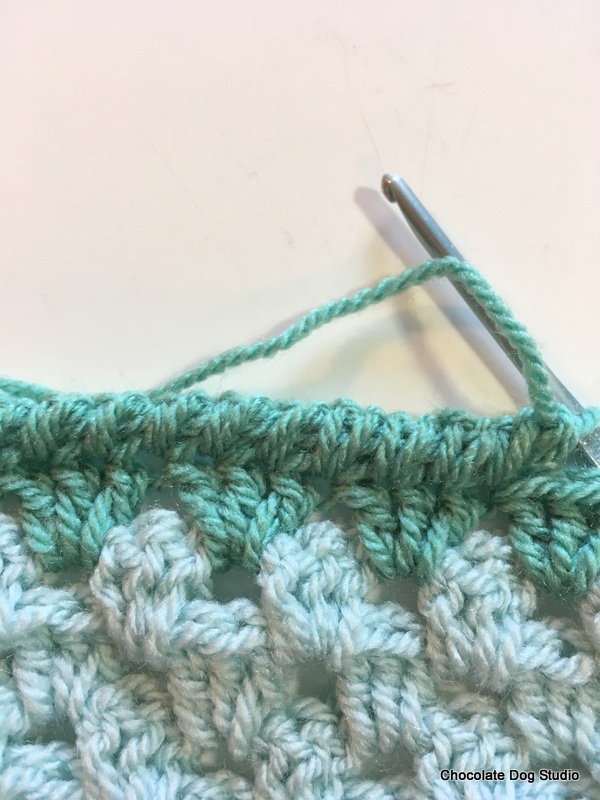Learn how to make that blanket bigger. I have been getting several people asking how to make different patterns bigger. This is a great skill to have as there are so many beautiful striped baby blankets that we wish we could increase. Here is your chance to take charge of this process.
There are a few things that you need that aren’t on the usual crocheting supply list.

Supplies
- The first is a postal or food scale that weighs in grams.

- A yarn label for the yarn you will be using to crochet the afghan. (Almost all yarn is measured in grams.) Stylecraft Special DK has 100 grams per skein.

- A calculator for figuring the math part along with a pencil and paper. I use my afghan planner book that I made out of a composition book. You should use the worksheet.
- The yarn that matches the yarn you will be using. (I will be using some stash Stylecraft Special DK for this purpose.)
- A crochet hook of the correct size for your project.
- Scissors
- The Free PDF worksheet
Weigh the Yarn
Start by crocheting the foundation chain to the desired length in the yarn weight you will use for the crochet blanket. Then crochet the first set of color rows on the chain.
Ie: If you are creating a baby version of a granny stripe then crochet a length of chain about 36″ long. Crochet the first two rows, tie off and cut your yarn.

( I apologize for how yucky and old my postal scale looks. )
Then you put a bowl on your postal scale and turn it on. It should zero out the weight of the bowl, in other words it is ignoring the weight of your bowl and will just weigh your crocheting. Add your crocheted strip to the bowl. Write down the weight of the 2 rows.

Check the Width
You will need to decide how wide to create that crochet blanket. Read the pattern you are adapting and see what the measurements are. Most smaller blankets do not have the width to proportionally carry the width. Baby blankets run about 36″ wide and many adult blankets or throws vary from 45-60 inches wide depending how large you will creat the blanket.
There will need to be some rows added to the width. How are you going to do that. The crochet blanket above has a mirror effect from the center green stripe.


The blankets above have a varied striping sequence and you could simply repeat the first striping sequences again until the blanket is the right size.

The Sunshine and Shadows afghan would require you to add rows in the middle sections of color. It might be as simple and crocheting each row twice which would double the size or only crochet the vibrant middle sections twice which would increase it a smaller amount. Whichever you choose to do be sure to add these rows to your stitch count as you prepare the worksheet.
Count the Rows
Count how many rows are in the blanket using each color. You can use the gauge to figure out how many rows there will be in the width that you want the blanket to be.
Using the yarn label take the weight of the yarn and divide it by the weight of the completed row of color. This will tell you the approximate number of color rows you can crochet using each skein. Next do the math for each color and figure out how many skeins you will need for the blanket.
Don’t forget to figure in yarn for the border while you are figuring out the yarn. Add the border rows to the stripe you crocheted earlier and see what it weighs in grams. Then multiply the weight by 4 to see how many skeins you will need. If there are multiple colors in the border rows simply weight before you add the next color and makes notes of the weights.
Check Your Math
(Note: If there are different stitches in it, crochet and weight each stitch row. Every stitch style uses a different amount of yarn which gives you a different weight of yarn.
- Use the same yarn to do your figuring as the pattern you will be crocheting.
- Be sure to check your gauge and make sure that you are crocheting at your usual tension.
Believe me, knowledge is valuable and think how free you are now! You can increase the size of any striped afghan from ripples to simple granny stripes easily using this method.
New Crochet Blankets in the Works


Talk to you later,
Karen



























































 s
s
 t)
t)


























